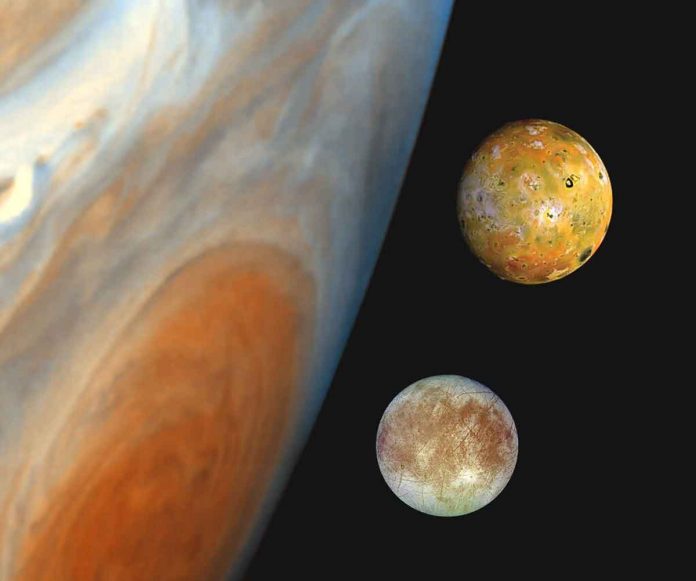The Hubble Space Telescope was used by a team led by the Southwest Research Institute to observe Jupiter’s moon, Europa, at ultraviolet wavelengths, filling a “gap” in the various wavelengths used to observe this icy water world. The team’s near-global UV maps show sulphur dioxide concentrations on Europa’s trailing side.
SwRI will expand on these findings with the Europa Ultraviolet Spectrograph (Europa-UVS), which will observe Jupiter’s fourth largest moon from NASA’s Europa Clipper, which is set to launch in 2024. Scientists are almost certain that a saltwater ocean containing nearly twice as much water as all of Earth’s oceans exists beneath Europa’s icy surface. This moon may be the most promising location in our solar system for life beyond Earth.
“While other materials have been detected across Europe’s relatively young surface,” said Dr. Tracy Becker, lead author of a paper describing these UV observations. “Determining whether these other materials are native to Europa is critical for understanding the formation and evolution of Europa.”
Examining the surface material can reveal information about the composition of the subsurface ocean. SwRI’s dataset is the first to generate a near-global map of sulphur dioxide that correlates with large-scale darker regions in both visible and ultraviolet wavelengths.
“The results were not surprising, but we did get much better coverage and resolution than previous observations,” said SwRI co-author Dr. Philippa Molyneux. “The majority of the sulphur dioxide is seen in Europa’s “trailing” hemisphere. It’s most likely concentrated there because Jupiter’s co-rotating magnetic field traps sulphur particles emitted by Io’s volcanoes and slams them into Europa’s backside.”
Io, another of Jupiter’s largest moons, is thought to be the most volcanic body in the solar system. The magnetic field of Jupiter can cause chemical reactions between water ice and sulphur, resulting in sulphur dioxide on Europa’s surface.
“In addition to studying the sulphur dioxide on the surface, we’re still trying to figure out why Europa which has a surface known to be dominated by water ice doesn’t look like water ice at ultraviolet wavelengths, as confirmed by this paper,” Becker said. “We’re working hard to figure out why.” The findings were published in the journal The Planetary Science Journal.

